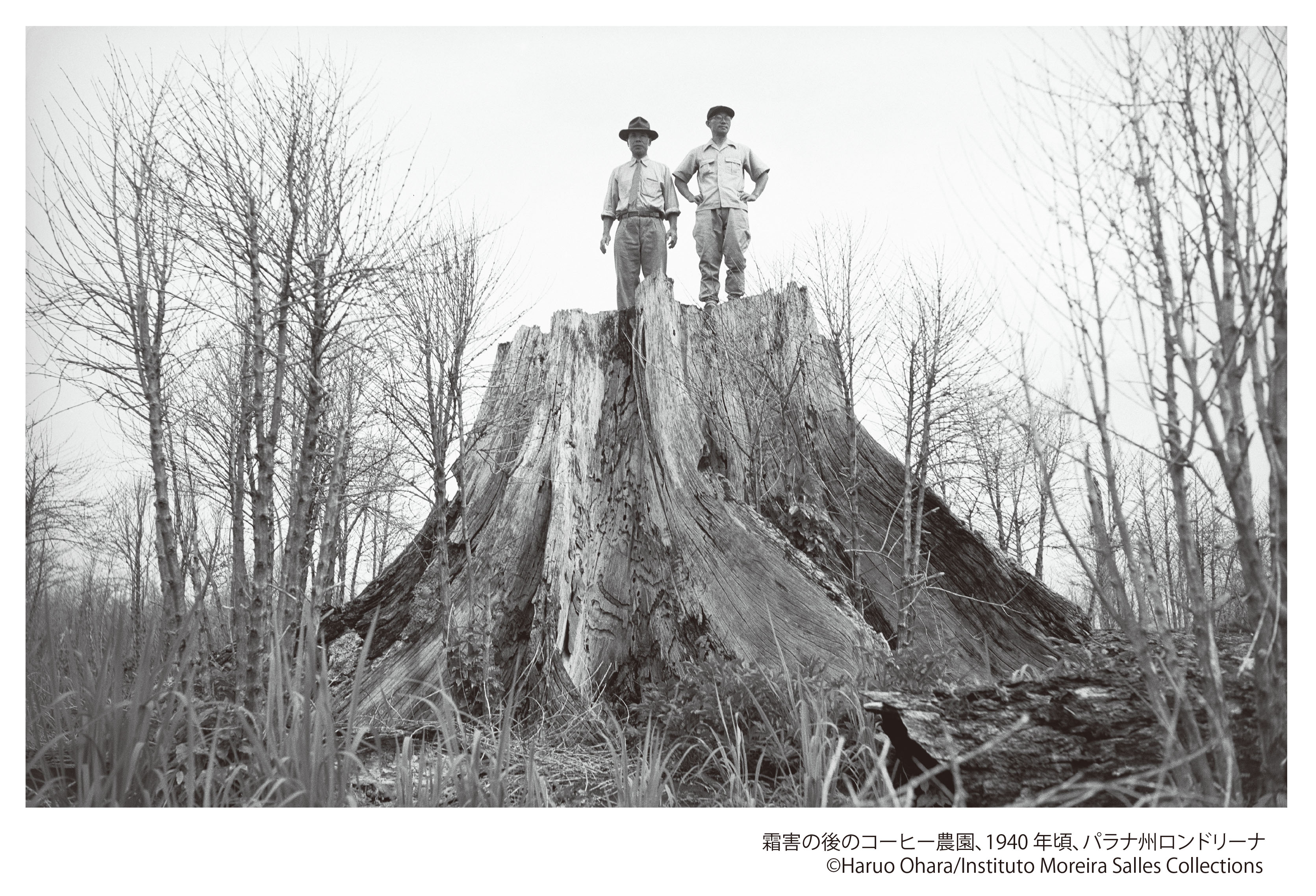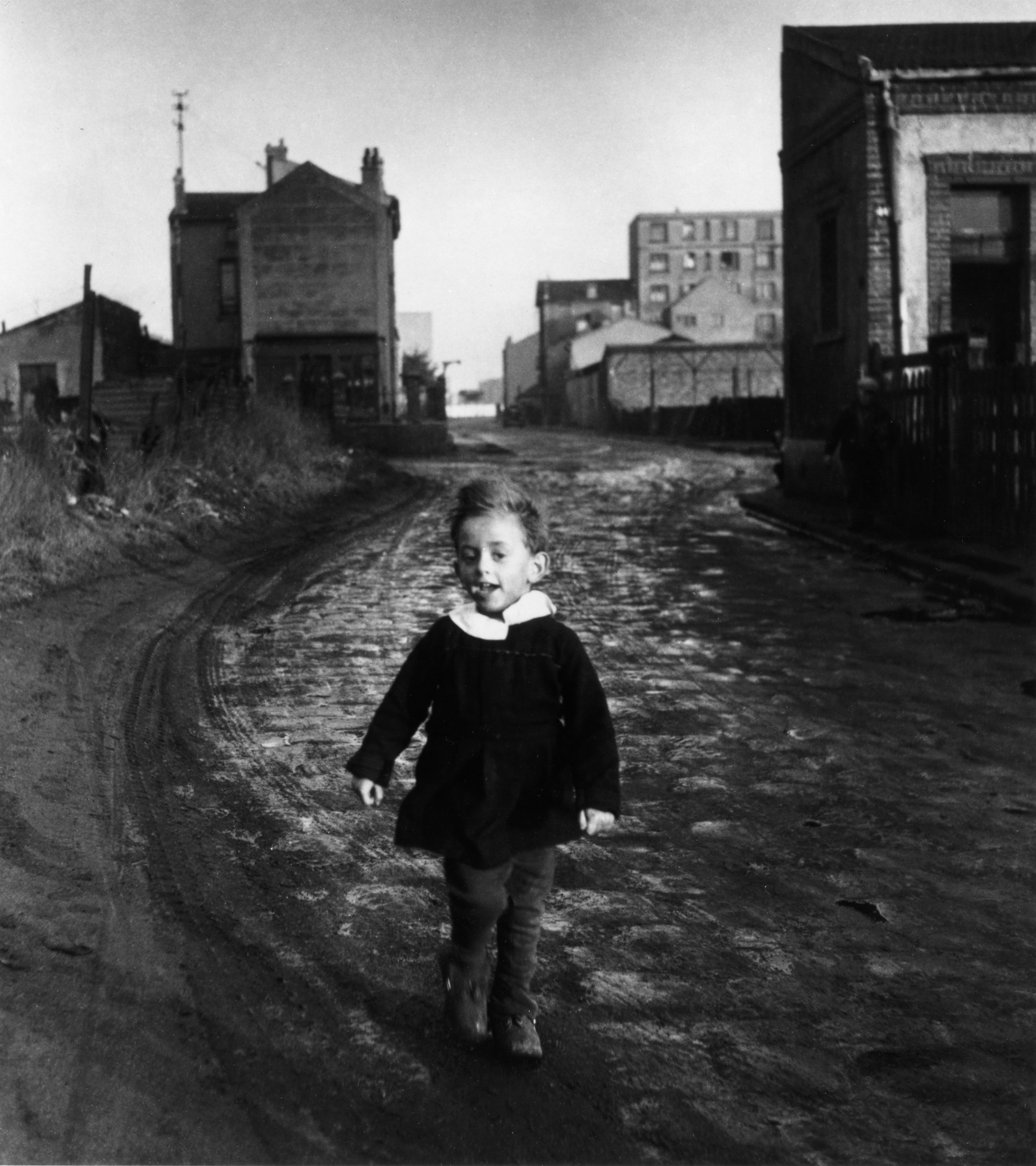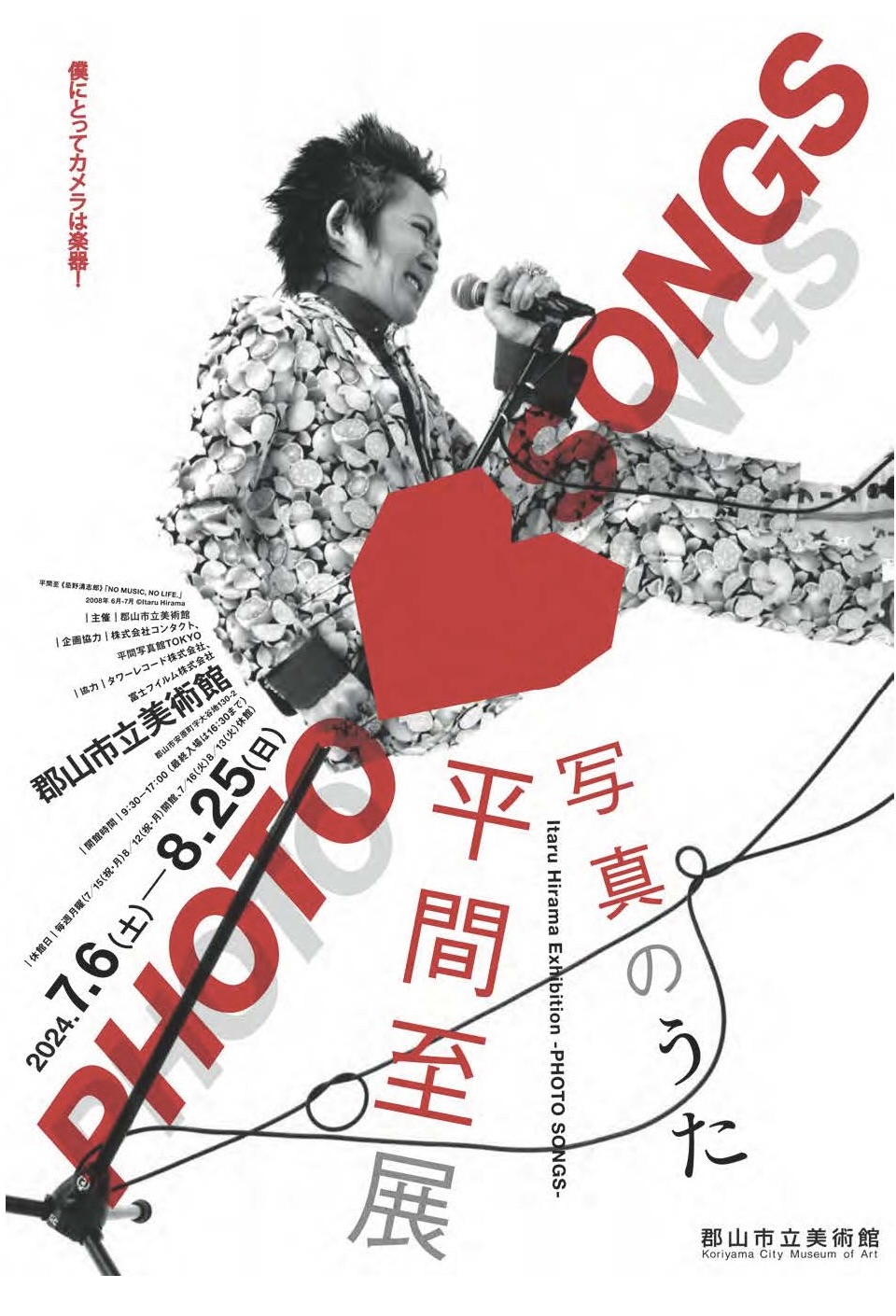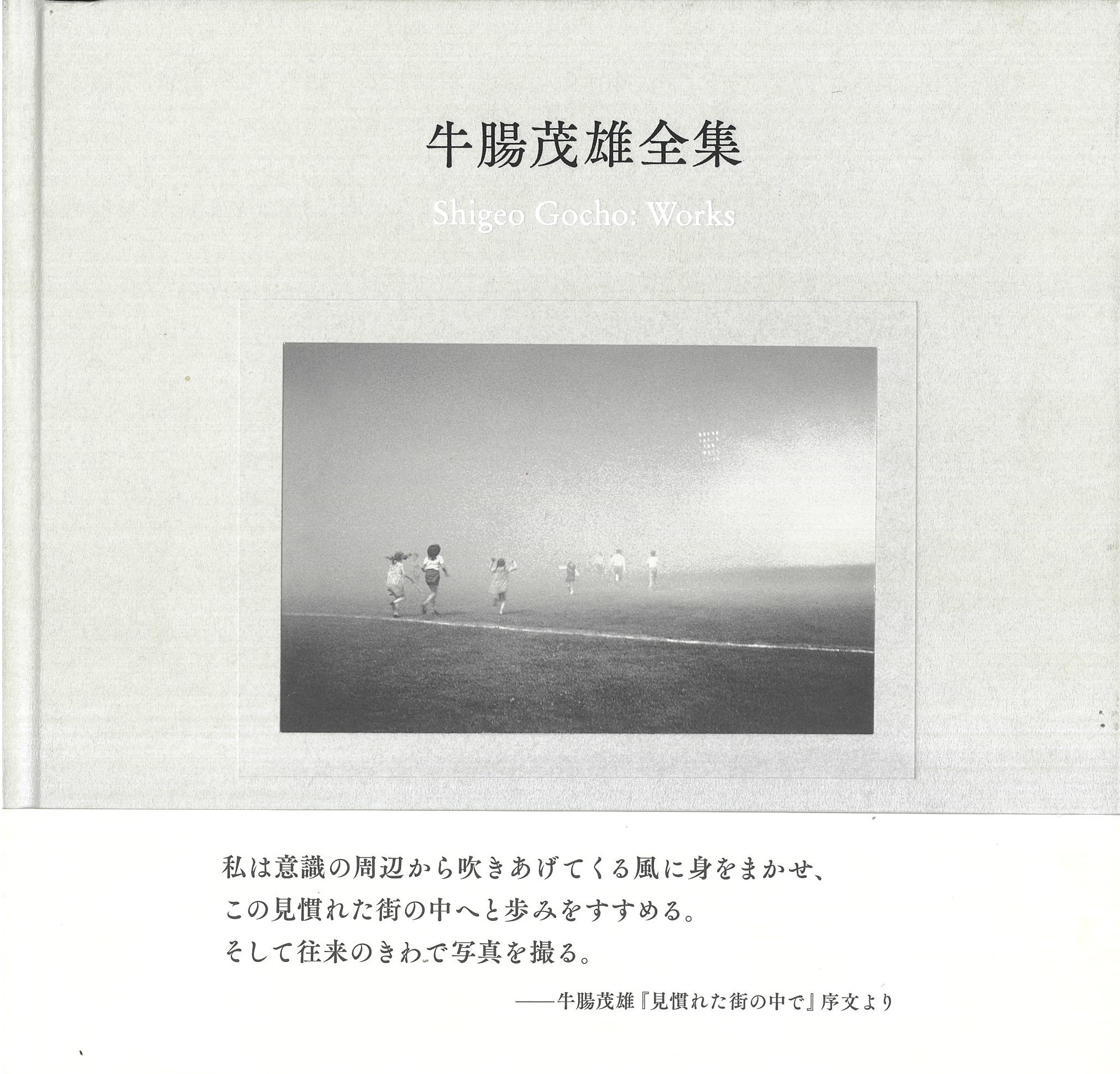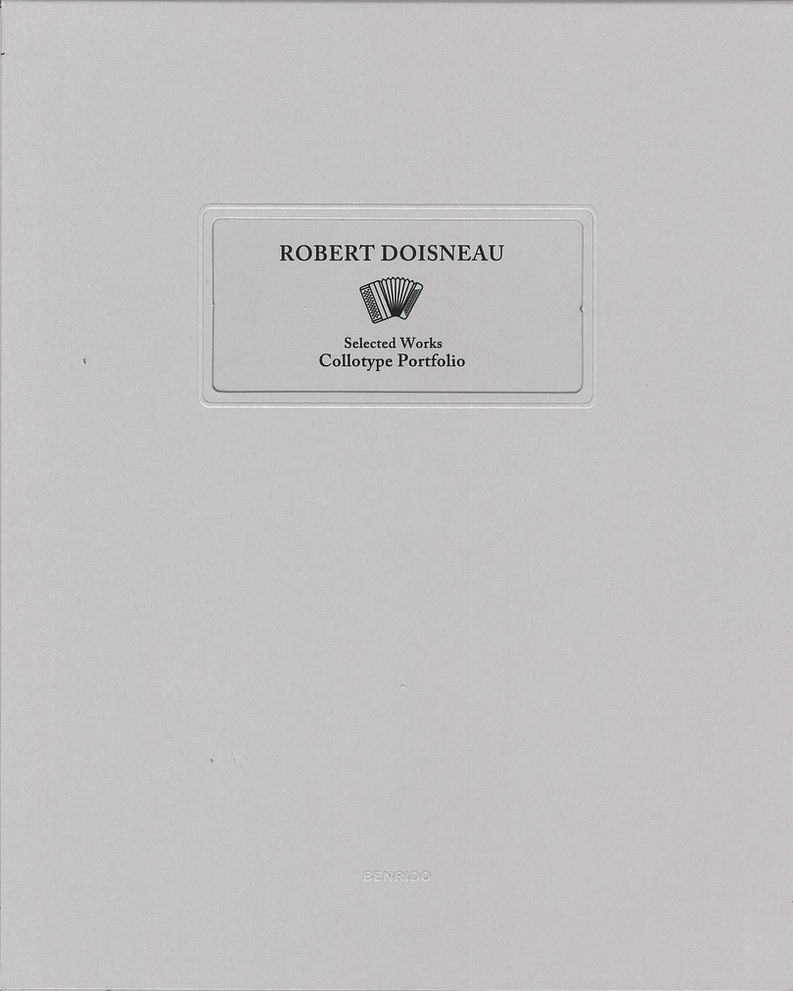昨日まかれた種に感謝。今日見る花を咲かせてくれた。
―大原治雄
開拓農民としてブラジルへ渡り、アマチュア写真家として独自の写真世界を築き上げ、ブラジル国内で高い評価を得た日本人がいました。その名は大原治雄。2016年、生地である高知を皮切りに、日本で初めてとなる大規模な巡回展が国内3会場で開催され、大きな反響を呼びました。本展は、この展覧会から厳選した約30点を展示、首都圏において初の大原治雄の作品を紹介する貴重な機会となります。
1909年、高知県に生まれた大原治雄が、家族とともに集団移民として故郷を後にしてブラジルへ渡ったのは17歳の時でした。“夢の新天地”で彼らを待ち受けていたのは、コーヒー農園での奴隷労働に近い過酷な労働でした。その現実から逃れる手段として、一家は原生林に覆われた未開拓の地パラナ州ロンドリーナに入植し、長い年月をかけて自らの農園を切り拓いていくことになります。
大原の転機となったのは、同じ日系移民・幸(こう)との結婚でした。その結婚式を撮影した写真家との交流が、大原を写真の世界へ導く契機となります。小型カメラを入手した大原は、独学で日々の農作業の合間に家族や身近な風景を撮影することに、新たな喜びを見出すよう
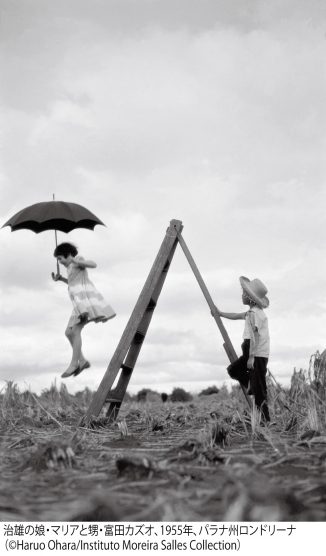 になっていきました。およそ人間の力が及ぶべくもない広大な大地の中で、自らも自然の一部として生きる命の歓びを、大原はあたかも日記を綴るように撮影を続けていきます。新天地で広大な農園を切り拓き、家族や仲間たちとの農作業のかたわら、身近な風景を柔らかな光をもって撮影しつづけた写真は、過酷な労働を感じさせることはなく、日常のささやかな喜び、「天と地をつなぐやうな」自然の雄大さ、そして人間讃歌に満ちています。それは、現代の私たちにとってもどこか懐かしく、新鮮なみずみずしさを感じさせてくれるものでもあります。
になっていきました。およそ人間の力が及ぶべくもない広大な大地の中で、自らも自然の一部として生きる命の歓びを、大原はあたかも日記を綴るように撮影を続けていきます。新天地で広大な農園を切り拓き、家族や仲間たちとの農作業のかたわら、身近な風景を柔らかな光をもって撮影しつづけた写真は、過酷な労働を感じさせることはなく、日常のささやかな喜び、「天と地をつなぐやうな」自然の雄大さ、そして人間讃歌に満ちています。それは、現代の私たちにとってもどこか懐かしく、新鮮なみずみずしさを感じさせてくれるものでもあります。
大原は、現地の写真クラブで次第に頭角を現し、1998年に初めて開催された個展が大きな反響を呼び、その後、「クリチバ市国際写真ビエンナーレ」(パラナ州)において第2回(1998年)、第3回(2000年)と連続で紹介され、ブラジル国内で高い評価を受けました。大原にとって生涯の夢でもあった妻・幸(こう)と日本の地を再び踏むことは、1973年、幸の逝去によって潰えます。幸の死後、大原は膨大なネガを見直し、編集した家族の歴史を綴ったアルバムの制作に没頭し、9人の子供たちそれぞれに「母の思い出」でもあるこのアルバムを贈りました。1999年、89歳で家族に見守られながら永眠。2008年、日本人のブラジル移民100周年を記念して世界屈指の写真アーカイブであり美術館でもあるモレイラ・サーレス財団(IMS)に、ネガやプリントをはじめ写真用機材、日記など一連の資料が遺族により寄贈されました。
本展は、IMSの全面的な協力により、その代表作約30点を展示。17歳でブラジルへ渡って以来、故郷の地を踏むことのなかった大原治雄の叶わなかった願いが、彼の残した写真による展覧会という形で果たされることになります。
作家プロフィール
大原 治雄 (おおはら はるお)
1909年11月5日、高知県吾川郡三瀬村(現・いの町)に農家の長男として生まれる。 17歳で家族とブラジルに渡り、サンパウロ州のコーヒー農園で働いた後、1933年、パラナ州ロンドリーナに最初の開拓団として入植。1938年、小型カメラを手に入れ、次第に写真に没頭。
1951年、ロンドリーナ市の新空港建設のため、市街地に生活を移す。農業経営の一方、60年代後半まで国内外のサロンに積極的に参加。無名のアマチュア写真家だったが、1970年代から地元新聞などで紹介されるようになり、1998年、「ロンドリーナ国際フェスティバル」および「第2回クリチバ市国際写真ビエンナーレ」で、初の個展「Olhares(眼差し)」が開催され、大きな反響を呼ぶ。1999年8月、ロンドリーナで死去。享年89。
2008年、日本人ブラジル移民100周年を記念して、遺族により写真と資料の一式がモレイラ・サーレス財団に寄贈された。2015年、NHKドキュメンタリー番組「新天地に挑んだ日本人~日本・ブラジル120 年~」「国境を越えて―日本―ブラジル修好120年」、NHK・Eテレ「日曜美術館~大地が育てた写真~」で紹介され大きな反響を呼ぶ。
知られざる移民写真家の物語
「ブラジルの大地に生きた写真家・大原治雄」
会 場 :FUJIFILM SQUARE (フジフイルム スクエア)写真歴史博物館
〒107-0052 東京都港区赤坂9丁目7番3号
(東京ミッドタウン・ウエスト)
TEL:03-6271-3350
URL:http://fujifilmsquare.jp
会 期 :2017年10月1日(日)~12月28日(木)
※会期中無休
開館時間:10:00~19:00(入場は18:50まで)
入場料 :無料
主 催 :冨士フイルム株式会社
特別協力:ブラジル大使館、モレイラ・サーレス財団(IMS)
後 援 :港区教育委員会
企 画 :コンタクト
*記載事項は2017年7月現在のものです。内容が変更になる場合もあります。
併催イベント
①平間至氏 トークショー(写真家)
日 時:2017年11月4日(土)14:00-、16:00-
会 場:FUJIFILM SQUARE (フジフイルム スクエア)写真歴史博物館
※ 座席はございませんので、予めご了承ください。
入場料:無料
②酒井邦博氏 トークショー
(NHKディレクター、NHK・Eテレ
「日曜美術館~大地が育てた写真 ブラジル移民大原治雄」他担当)
日 時:2017年12月2日(土)14:00-、16:00-
会 場:FUJIFILM SQUARE (フジフイルム スクエア)写真歴史博物館
※ 座席はございませんので、予めご了承ください。
入場料:無料
Living on Brazil’s Wide Earth –
The Hidden Story of Emigrant Photographer Ohara Haruo
Thankful for the seed cast yesterday; It is what made today’s flower bloom.
Ohara Haruo
There was a Japanese man who emigrated to Brazil as pioneer farmer, mastered photographic technology on his own and received high praise from critics at home and abroad for creating his own world of photography. His name is Ohara Haruo. In 2016 – starting in Ohara’s home prefecture Kochi – a retrospective exhibition traveled throughout Japan and drew enthusiastic response from the public. This exhibition presents 30 selected works from this travelling exhibition, giving also the people in the greater Kanto area a chance to get a look at Ohara Haruo’s marvelous works.
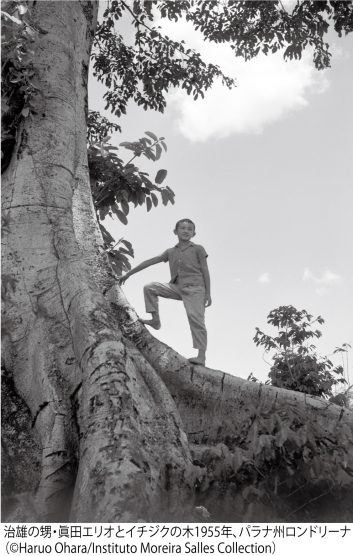 In 1927, at the age of seventeen, Ohara and his family emigrated to Brazil as part of a larger group of Japanese immigrants. After arriving in Brazil he first had to work as farm laborer in São Paulo. In order to live a more autonomous and unrestricted life, the family later moved to the undeveloped areas of Londrina in the state of Paraná as one of the first to settle there. They would live there as farmers for a long time. At the age of 24 Ohara married and it was his wedding that made him think about ways to record important events in his life and that finally led him to buy his first camera a few years later. It does not surprise, thus, that his first photograph depicts his wife Kou. From then on Ohara continued to make photographs when he had time to spare from work at his farm. He studied and mastered photographic technique, gradually spending more and more time with his camera. A subject that Ohara continuously depicted were the all-encompassing landscapes, the nature of Londrina; Landscapes structured by a sky and a horizon that Ohara himself opened up by developing the primeval forests of Londrina. Against the background of this wide sky we also find Ohara himself. This is a figure full of joy over having overcome previous hardships. Yet, even when humans appear in Ohara’s photographs it is not only them, but also the vast land of Londrina that takes the center stage.
In 1927, at the age of seventeen, Ohara and his family emigrated to Brazil as part of a larger group of Japanese immigrants. After arriving in Brazil he first had to work as farm laborer in São Paulo. In order to live a more autonomous and unrestricted life, the family later moved to the undeveloped areas of Londrina in the state of Paraná as one of the first to settle there. They would live there as farmers for a long time. At the age of 24 Ohara married and it was his wedding that made him think about ways to record important events in his life and that finally led him to buy his first camera a few years later. It does not surprise, thus, that his first photograph depicts his wife Kou. From then on Ohara continued to make photographs when he had time to spare from work at his farm. He studied and mastered photographic technique, gradually spending more and more time with his camera. A subject that Ohara continuously depicted were the all-encompassing landscapes, the nature of Londrina; Landscapes structured by a sky and a horizon that Ohara himself opened up by developing the primeval forests of Londrina. Against the background of this wide sky we also find Ohara himself. This is a figure full of joy over having overcome previous hardships. Yet, even when humans appear in Ohara’s photographs it is not only them, but also the vast land of Londrina that takes the center stage.
From the early 1970s on, Ohara, after becoming a member of the local photo club, began to attract attention from local newspapers and subsequently became known to a broader public. In 1998, he held his first solo-exhibition which created considerable reaction from critics and visitors alike. He thought about returning to Japan shortly before his death. However, in May 1999, he died in Londrina at the age of 89, surrounded by his family. In 2008, commemorating the centenary of Japanese immigration to Brazil, his family donated his photographs and documents to the Instituto Moreira Salles, Brazil’s leading archive of photographic material.
He himself didn’t return to Japan. Ohara’s works however finally found their way here. Thanks to the full support by the Instituto Moreira Salles, this exhibition will show 30 carefully selected and representative works of this great artist.
Artist Information
Ohara was born on November 11, 1909 as the eldest son to farmers in Misemura (present-day town of Ino) in the district of Agagawa, located in Kochi prefecture on the south coast of Shikoku. In 1927, at the age of seventeen, he and his family emigrate to Brazil. After working as farm laborer in São Paulo he moves to Londrina in the state of Paraná in 1933. Ohara acquires his first camera at the age of 29 and starts taking photographs in the spare time between growing fruits and coffee at his farm.
In 1951 he moves to the urban area of Londrina due to an airport being built next to his home. There he becomes a member of the Photo Cinema Club Bandeirante, a photographic association founded in 1939. In the latter half of the 1960s he begins to participate in photographic salons in Brazil and abroad while working at his farm. First an unknown amateur photographer, from the 1970s on his photographs start to attract attention from local newspapers. In 1998, he holds his first solo-exhibition Olhares (‘Looks’) at the 2nd International Biennial of Photography in Curitiba and the International Festival Londrina. He dies in Londrina in August 1999 at the age of 89, surrounded by his family.
In 2008, commemorating the centenary of Japanese immigration to Brazil, his family donated his photographs and documents to the Instituto Moreira Salles. In 2015, the year of the 120th anniversary of the establishment of diplomatic relationships between Brazil and Japan, he was introduced to a broader Japanese public through various NHK documentary programs such as ‘Japanese breaking new ground – 120 years Brazil-Japan’, ‘Crossing Boarders – 120 Years of Friendship between Brazil and Japan’ and ‘The New Sunday Museum: Ohara Haruo, Emigrant Photographer of Brazil’s wide hinterland’.
Living on Brazil’s Wide Earth –
The Hidden Story of Emigrant Photographer Ohara Haruo
Period:October 1st , 2017 (Sun.) – December 28th, 2017 (Thu.)
open everyday from 10:00 to 19:00(last admission 18:50)
Number of exhibited works:30
Venue:The Photo History Museum at FUJIFILM SQUARE
9-7-3 Akasaka, Minato-ku, Tokyo, 107-0052 JAPAN
(Tokyo Midtown West)
TEL: 03-6271-3350 URL: http://fujifilmsquare.jp
Admissions: Free
Organisation: FUJIFILM Corporation
Cooperation: The Embassy of Brazil, Instituto Moreira Salles
Collaboration: The Minato-ku Board of Education
Planning and Production: Contact Co., Ltd.
Events during the exhibition
① Gallery Talk by Hirama Itaru
(Photographer; appeared on the NHK Educational Program
‘The New Sunday Museum: Ohara Haruo,
Emigrant Photographer of Brazil’s wide hinterland’)
Date: November 4, 2017, 14:00-14:30, 16:00-16:30
Venue: The Photo History Museum at FUJIFILM SQUARE
*Entrance free
② Gallery Talk by Sakai Kunihiro
(Director of the NHK documentary ‘The New Sunday Museum:
Ohara Haruo, Emigrant Photographer of Brazil’s wide hinterland’)
Date: December 2, 2017, 14:00-14:30, 16:00-16:30
Venue: The Photo History Museum at FUJIFILM SQUARE
*Entrance free
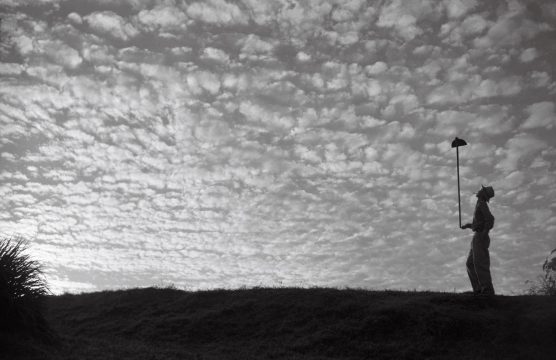
朝の雲、1952年、パラナ州テラ・ボア ©Haruo Ohara/Instituto Moreira Salles Collection


